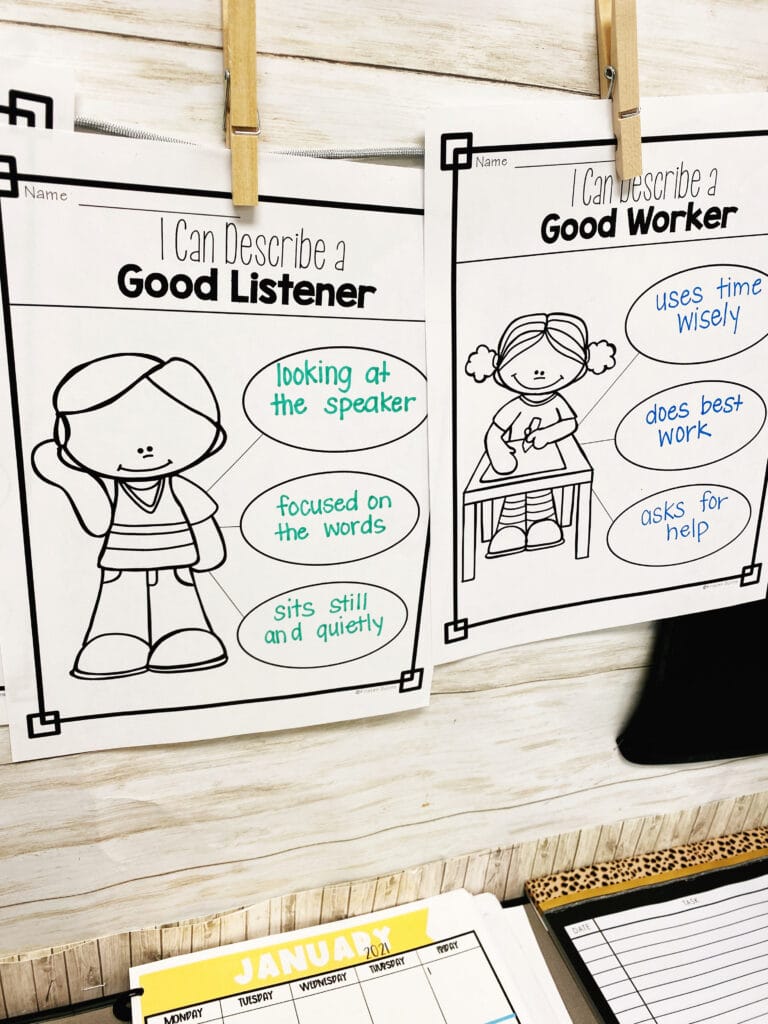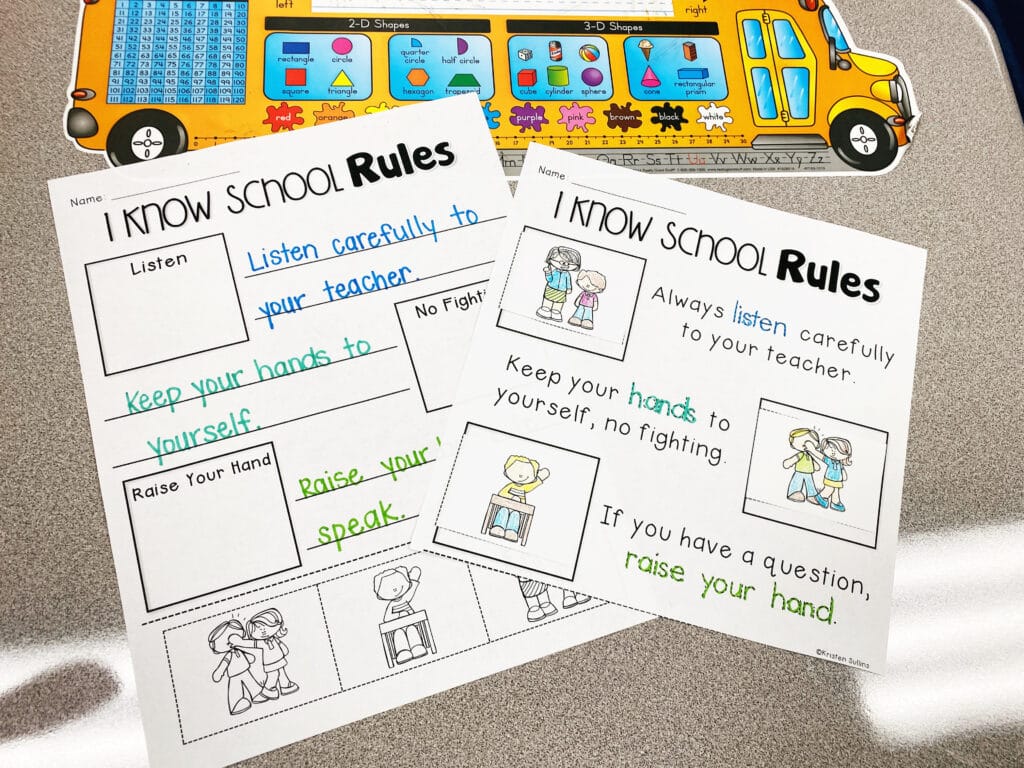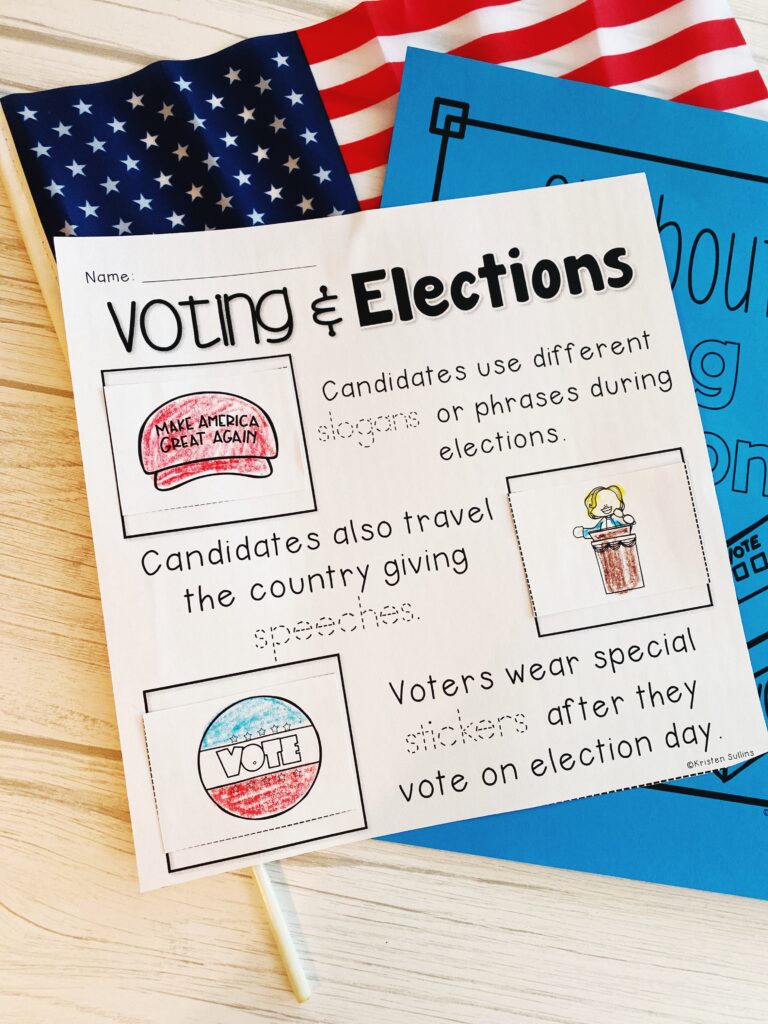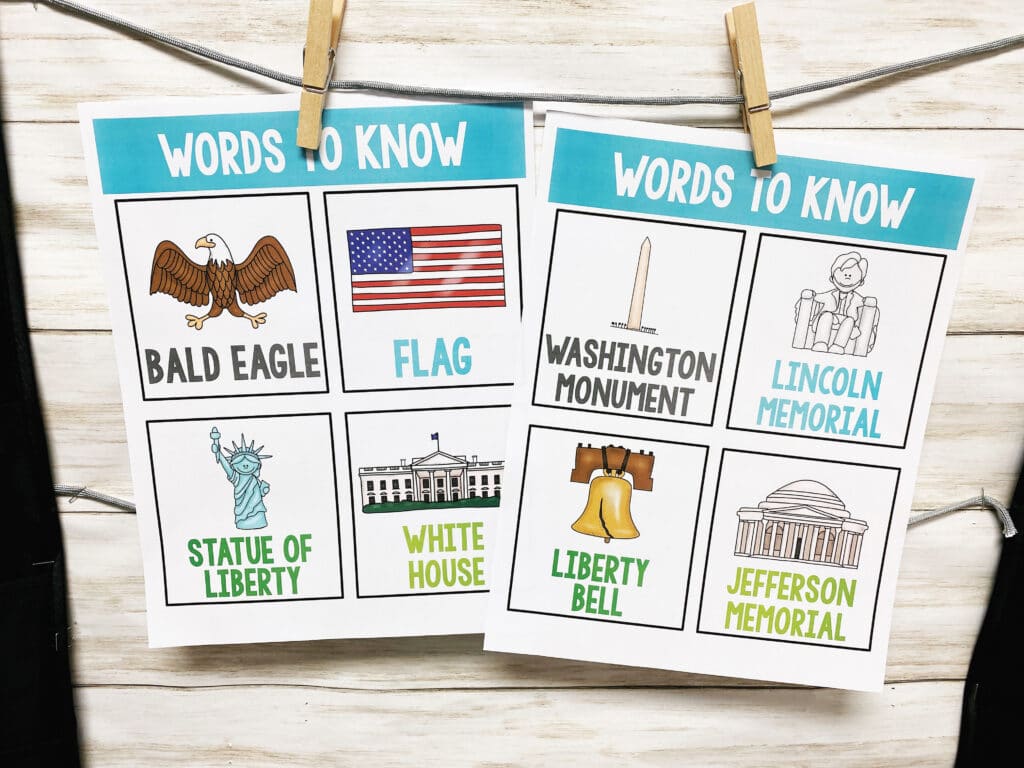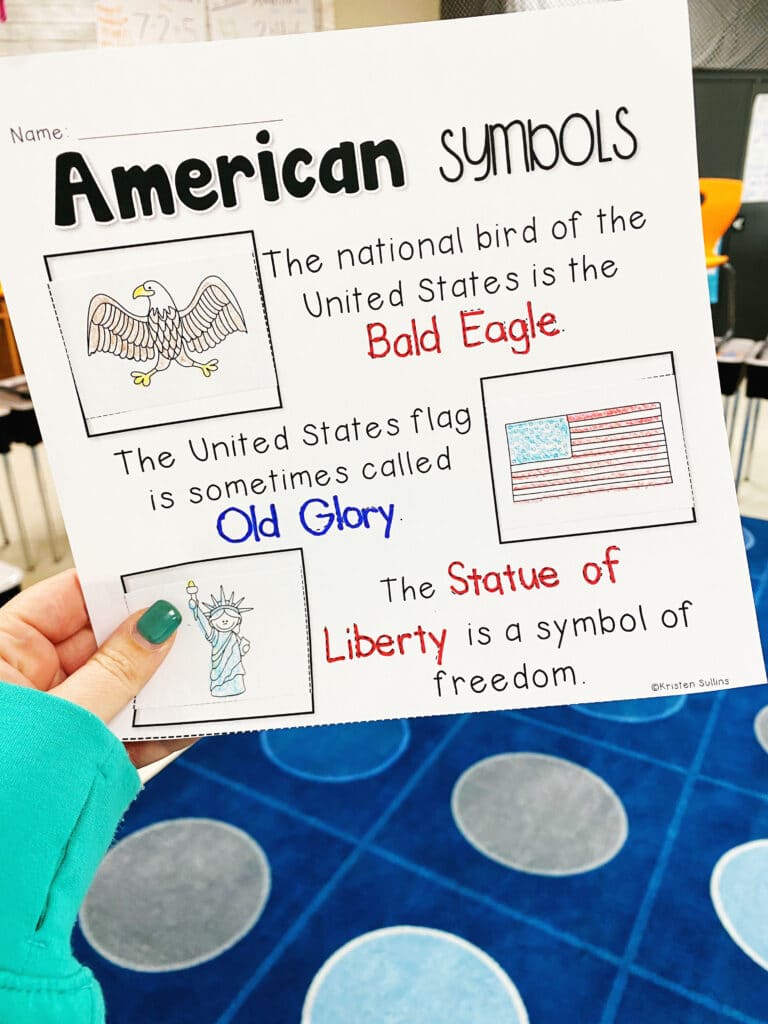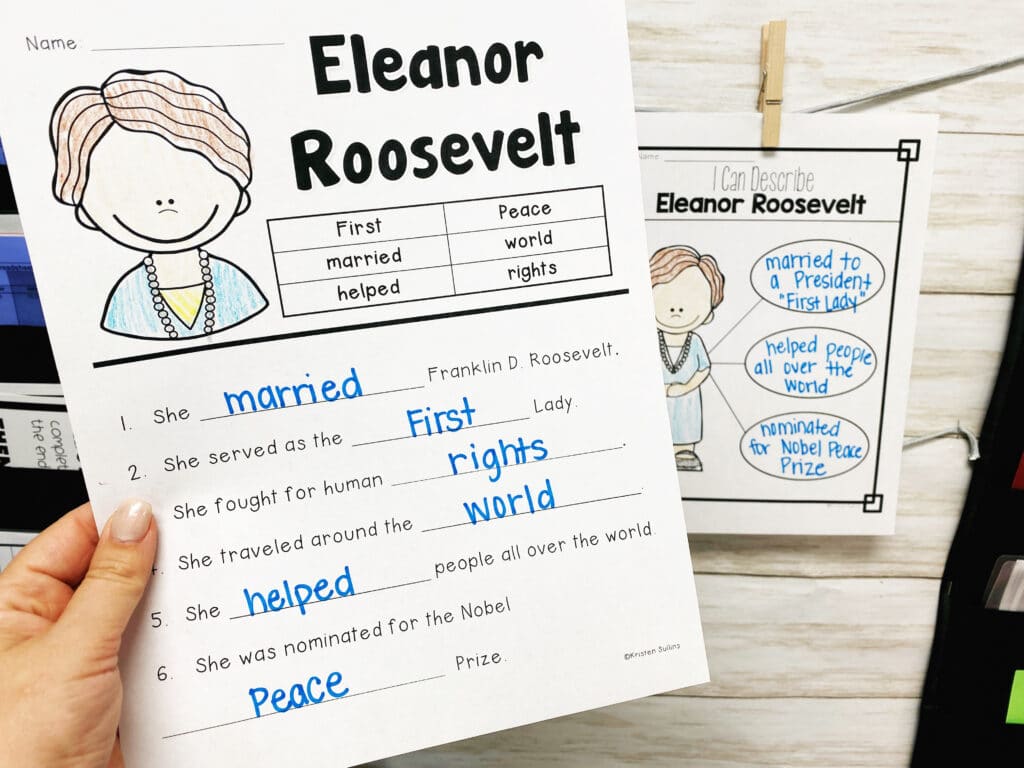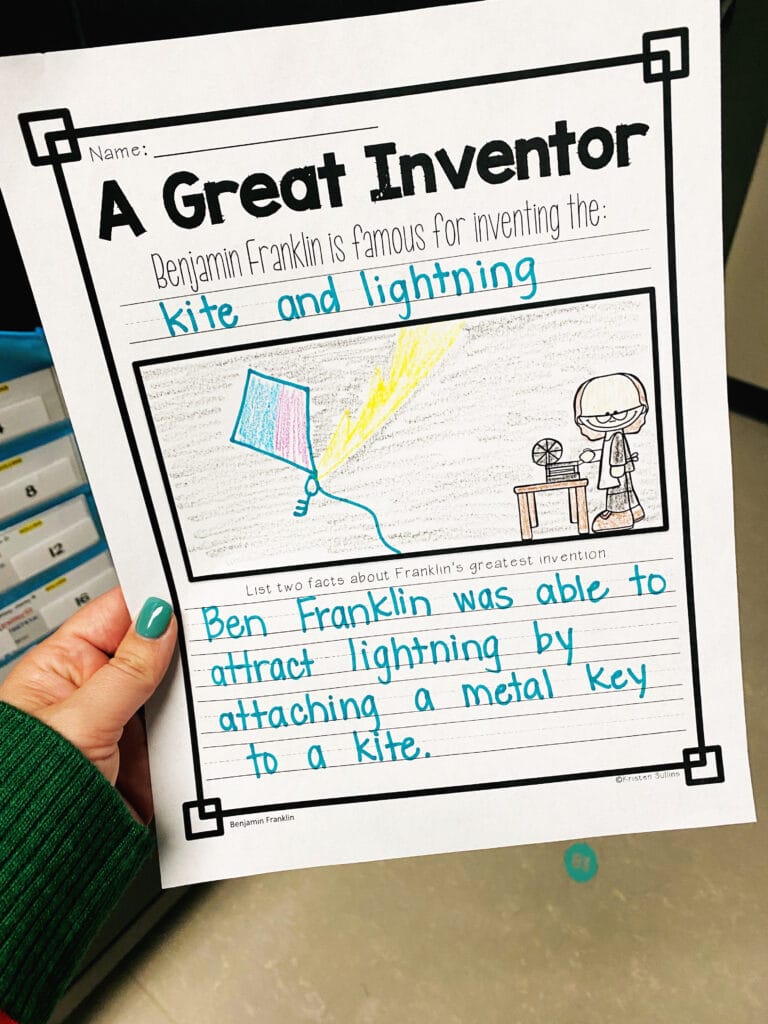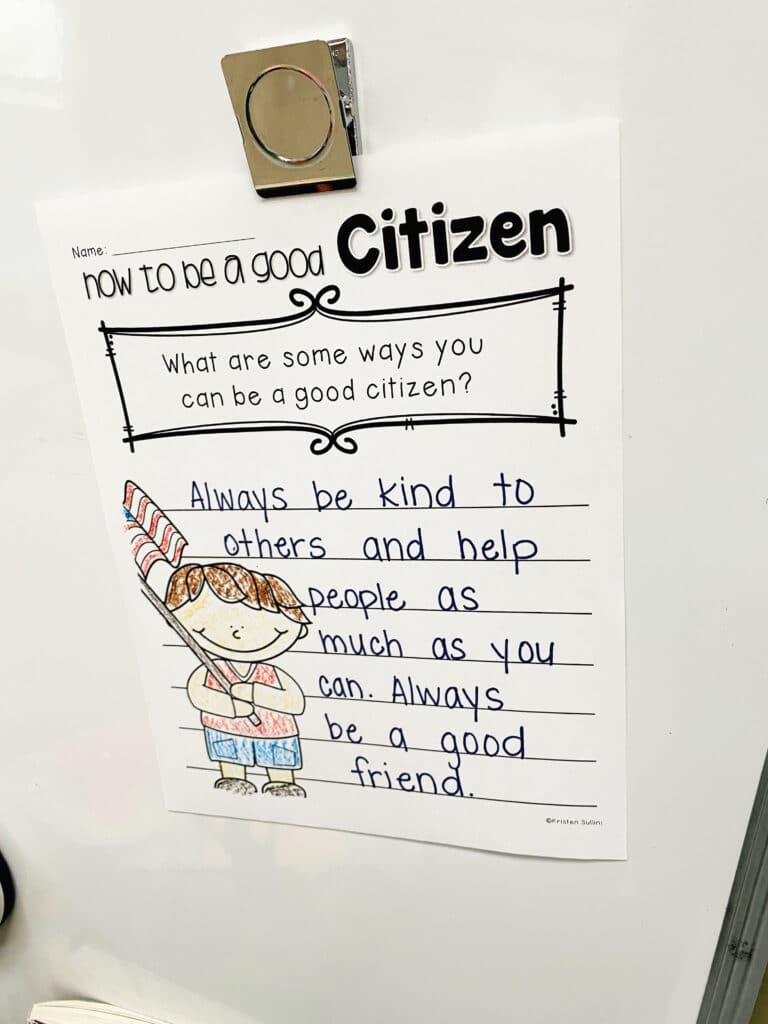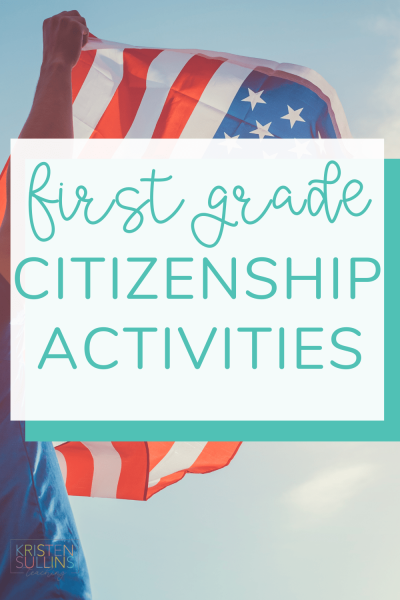Building a strong classroom community is something that all first grade teachers strive to do and it all hinges on one thing: citizenship.
Citizenship is the status of being a citizen, along with the rights, duties and privileges of being a citizen.
Communities, especially school communities, cannot exist without rules and respect for the rules. Citizenship activities in first grade can teach students what rules are, why we need to follow them and ultimately how to respect the rules and each other.
These are things we typically do as teachers anyway, but if we are a little more intentional about it, we can combine back to school procedures and an important social studies unit all in one!
It is important for first grade students to understand:
- What is citizenship?
- Why do citizenship and rules matter?
- Who are historical figures that exemplify citizenship?
- What are symbols that showcase US citizenship?
- Why do citizens need to vote?
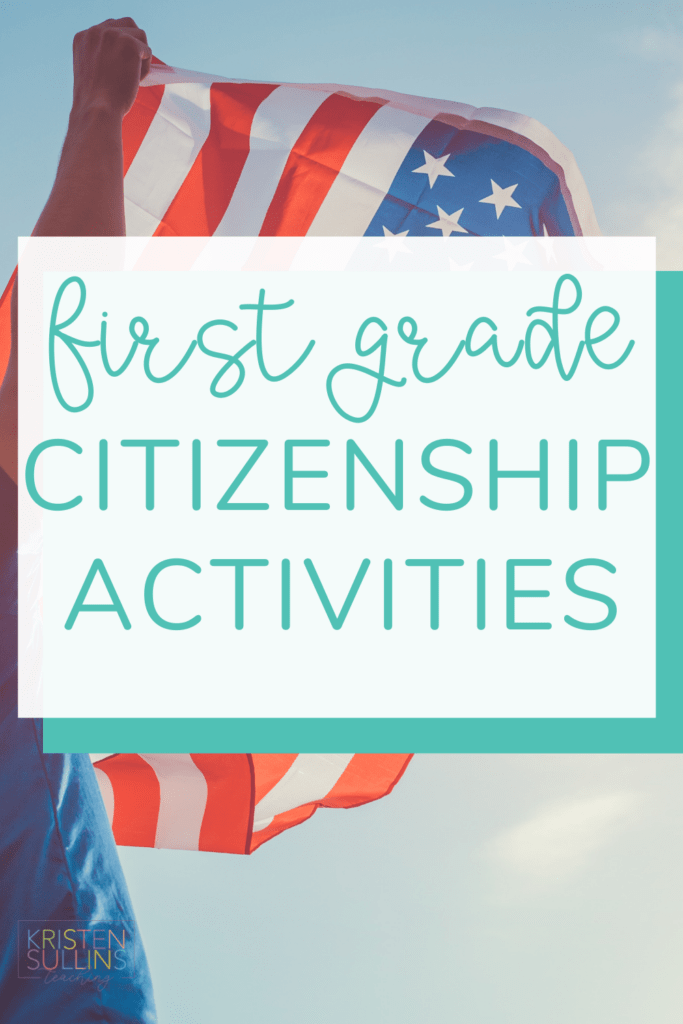
What is Citizenship (and Why Does it Matter in First Grade)?
Citizenship is the status of being a citizen, along with the rights, duties and privileges of being a citizen.
According to the Texas Essential Knowledge and Skills, students should be taught the following characteristics of good citizenship:
- Truthfulness
- Justice
- Equality
- Respect for oneself and others
- Responsibility in daily life
I like to cover a lot of these skills when I teach my back to school routines and procedures because I want to encourage students to use these characteristics in my classroom.
We all want our students to be truthful, treat others equally and have respect for oneself and others. Students are typically familiar with these characteristics, even if they do not know the correct names for them.
Justice however, is a common misconception for students. As teachers we strive to give each student what they need and that is very different for some students.
I teach my students early on that justice and equality does not mean that students all get the same thing, it means that each and every student gets what they NEED.
For example, some students need a short break every 5-10 minutes, where other students do not. Some students need a lot more warnings before a consequence, where other students do not.
This is a hard topic to teach with young students, but it's one that is important for creating a classroom community where students respect and support each other.
Citizenship and Rules
Now, that leads into a conversation about rules. Why do we have rules and how do they keep us safe?
Rules are put in place to keep communities (school, local, state or national) SAFE! I think it is very important for students to understand that rules are not there to keep everyone from having fun, but to make sure that we are SAFE.
Students, just like adults, will be much more willing to comply with rules if they understand WHY the rule is important.
Example: No running in the halls.
Reason: Students can safely walk past each other in the halls without incident, running often leads to accidents or injury.
You can read more in my post about Rules and Laws here:
Voting and Citizenship for First Grade
According to the Texas Essential Knowledge and Skills, students should also be taught the following characteristics of good citizenship:
- Participation in Government by:
- Education oneself about the issues
- Respectfully holding public officials to their word
- Voting
First grade students should explain and practice voting as a way of making choices and participating in government. Mock elections are such a fun way to do this!
The two parts of voting and elections that I like to focus on the most in my classroom are:
- Vocabulary
- The Process
First graders have a long time before they will actually be participating in an official election, but I think it is really good for them to start learning the vocabulary that is involved in an election.
Here’s a few key terms I make sure my first graders know:
- Election
- Candidate
- Voter
- Speeches
- Slogans
- Ballot box
Citizenship Symbols for First Grade
Symbols are an easy topic to cover for students in first grade. Many students are super familiar with national and state symbols, so it doesn’t take a lot of time to teach.
Here are the most common United States symbols that I cover in my classroom:
- United States flag
- The Liberty Bell
- Statue of Liberty
- Bald Eagle
- White House
- Lincoln Memorial
- Washington Monument
- Air Force One
- Mount Rushmore
They may be less familiar with national anthems and mottos.
National Anthem: Star Spangled Banner
National Motto: In God We Trust
It is important for first grade students to know these symbols that represent our citizenship because they stand for important events in our country’s history.
Symbols such as these are used to facilitate pride in our country, otherwise known as patriotism. This goes back to understanding why we have rules. Citizens who have a lot of pride in their country are more likely to respect the country’s rules, which helps keep our communities safe and in order.
Now, let’s talk about the United States Pledge of Allegiance. In schools, students say the pledge every single day. But a surprising amount of students have no idea what it actually means.
You can grab this free Pledge cut and paste activity below that is the perfect conversation starter.
Students have to correctly order the words in the US pledge. I like to do this activity as a class and as we come to a word, we talk about what it means. I often give synonyms as examples to help students understand what the words mean!
Historical Figures who Exemplify Good Citizenship
First Grade students should be able to identify historical figures and other individuals who have exemplified good citizenship such as Benjamin Franklin and Eleanor Roosevelt.
This is something that I like to fit into my social studies units through the use of biography studies. We look at the individual (or group) and the different contributions that they made through history.
Then, we look deeper into what character traits that person must have had to be able to contribute to their community in the way that they did.
We often find perseverance, respect and truthfulness to be underlying character traits, which helps encourage first grade students to strive to use those characteristics as well.
5 Conversations to have about Citizenship in First Grade
If you really want to make a difference with your students when talking about citizenship and how to build a strong classroom community, you have to take it a step further.
Once again, according to the Texas Essential Knowledge and Skills, first grade students should be able to explain how patriotic customs and celebrations reflect American individualism and freedom.
Basically, how do ALL of the things we learn about reflect the freedom that we enjoy as an American?
Here’s a few essential questions to ask your students to help lead that conversation:
- Why do we have rules and how do they keep our community safe?
- How can we show respect to others when they use their individual freedom to dress, speak or act differently than we do?
- How can being truthful and showing integrity like popular historical figures allow students to also make big contributions to their community?
- Why is it important to participate in voting to ensure justice for all citizens?
- How do United States symbols play a role in our country’s history and encourage patriotism and pride in our citizens?
Even if you don’t have time for the different activities that we talked about, I HIGHLY ENCOURAGE you to at least have these five conversations with your students.

